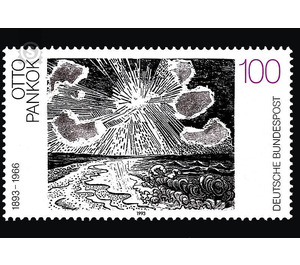German painting of the 20th century (3) - Germany / Federal Republic of Germany 1993 - 100 Pfennig
Theme: Art & Culture
| Country | Germany / Federal Republic of Germany |
| Issue Date | 1993 |
| Face Value | 100.00 |
| Color | multi-colored |
| Perforation | K 13 3/4: 14 |
| Printing Type | Multicolor offset printing |
| Stamp Type | Postage stamp |
| Item Type | Stamp |
| Chronological Issue Number | 1530 |
| Chronological Chapter | GER-BRD |
| SID | 171770 |
| In 50 Wishlists | |
Otto Pankok's (1893-1966) artistic commitment also applied to the disenfranchised and outlawed. Unlike Grosz, however, he did not use the snappy satire, but created sympathetic portrayals of marginal figures and outsiders of society. His series became particularly famous with scenes and portraits of a Sinti clan, with whom he had friendly contacts for many years. Pankok found after a short study at the art academies in Dusseldorf and Weimar and traumatic war experiences on the Western Front connection to the avant-garde artist group "Young Rhineland", which was founded in 1919 in Dusseldorf. In addition to Gert Wollheim, Otto Dix and Max Ernst, he belonged to the circle around the art dealer Johanna Ey, who, as a legendary "mother Ey", became a key figure in the modern Düsseldorf art scene. After the seizure of power by the National Socialists Pankok was exposed to the terror of house searches, police surveillance and work ban. Some lithographs from the Sinti settlement were shown and mocked in 1937 in the exhibition "Degenerate Art". After a failed attempt to emigrate to Switzerland, Pankok retired to the Eifel village of Pesch and had to hide his work from then on. Pankok preferred the technique of woodcut as a graphic artist, and the sheet "Sea and Sun" (1958) proves his intense sense of nature, which he created with an expressionist-passionate design language.


